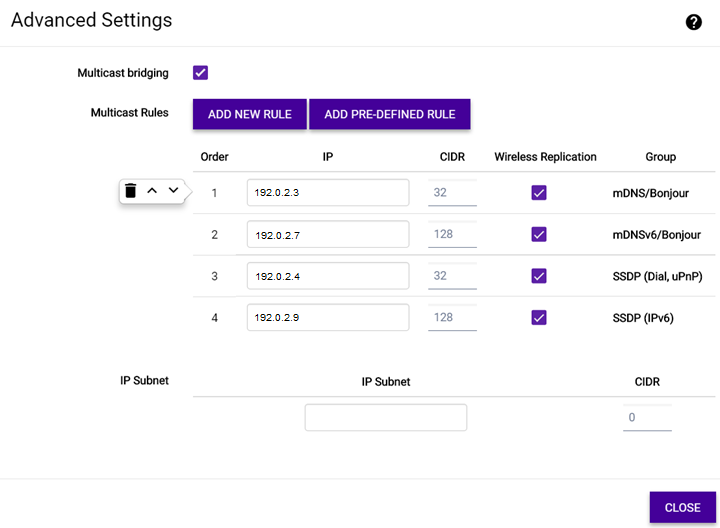A VLAN defines how the user traffic is presented through the network interface. The AP bridges all traffic between wireless clients and the VLANs to which it is exposed.
To configure VLANs:

| VLAN IDs | Specify the VLAN ID. This only applies
if the role's default action is Contain to VLAN. Note Including multiple VLANs in the VLAN ID field causes ExtremeWireless WiNG APs to load balance traffic across all of the listed VLANs. This is an advanced option and should only be enabled in special cases. APs use the lowest numbered VLAN in the list and do not load balance across the VLANs. |

| Multicast bridging | Select this option to enable forwarding of multicast traffic between the wired and wireless sides of the AP. Because multicasts consume a lot of 802.11 air time, when you enable this option you must also specifically identify the types of multicast traffic that you want forwarded by adding one or more rules. |
| Add New Rule / Add Pre-defined Rule | Add one or more multicast rules if you enabled
Multicast
Bridging. A multicast rule permits any traffic that
matches the rule. Note A multicast rule is defined as:
|
| IP | Enter the multicast IP address to which the traffic is sent. |
| CIDR | Classless Inter-Domain Routing (CIDR) is used along with the IP address to find the IP address range. The CIDR value indicates the routing prefix length (number of bits) of the IP address. When you add a predefined rule, the CIDR value is populated automatically by the multicast group you select for the pre-defined rule. Otherwise, the CIDR value is user defined. |
| Wireless Replication | Select this option if you want to enable the wireless multicast replication for this group. Wireless Replication filters multicast traffic that is being sent back to the wireless AP channel or wired network. |
| IP Subnet | Enter a valid IP subnet when using a captive portal. |